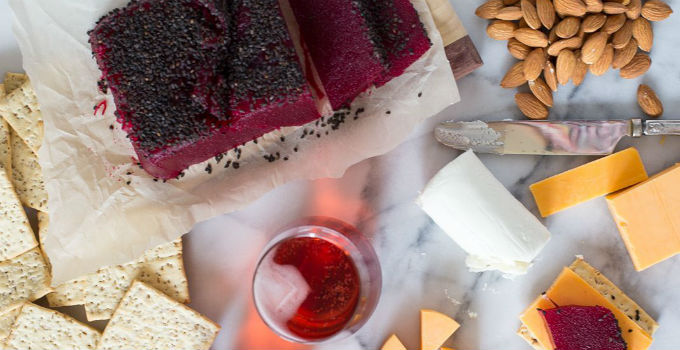
The history of the quince goes all the way back to the Garden of Eden. Because apples were unknown in the ancient world, a quince might well have tempted Eve, and the golden apples of the Hesperides, given to Aphrodite by Paris of Troy, were probably quinces too. Talk about a troublemaking fruit.
While kind of hideous to look at, a Chanel-worthy aroma alone makes quinces deserving of a place on your kitchen bench, but the real seduction happens during the low and slow heat of cooking. The raw, untouched quince transforms from pale yellow and very tart with a starchy texture into a soft, sweet, vibrant treat.
Poach them and they can be used in dishes much like stewed apple or poached pears. Just wash any residue off the skin then cut and core like you would an apple, without even peeling. Place the quince segments in a pot, cover with water and add the same weight of the fruit in sugar. Bring to the boil and simmer for about 3 hours for a rosy hue or 6 hours for a deeper blush. Leave the flavour pure or add some aromatics for extra yums.
Lemon zest and cinnamon quills are perfect if you’re using the fruit on your morning cereal, making a crumble or an upside down cake, or serving it on pancakes with whipped cream.
Star anise, orange zest and ginger make pork-pairing perfection, especially if your crackle is extra salty.
Lemon thyme, smashed garlic and half honey/half sugar marries beautifully with roasted duck and kipfler potatoes with buttered garlic beans. Reduce some syrup even further and add a little to the seasoned pan juices for a finishing sauce.
Reserve any of the poaching liquid from the quinces and reduce to a syrup to glaze a ham, or for a light drizzle over baked sweet potato or pumpkin.
The syrup is also delish in a salad dressing. Add 1/4 cup syrup, 1/4 cup red wine vinegar, 1/2 cup olive oil, a teaspoon of seeded mustard, sea salt and lots of pepper to a jam jar and shake vigorously.
If you’d like a little something delicious for your cheese platter, drain and puree the quinces after the initial 3 hours of cooking time and return to the pot. Cook the puree over a simmer pad to dim that heat even further for a further 3-4 hours until the puree becomes very thick and very dark. You’ll need keep a watchful eye over your pot and stir every 15-20 minutes. Turn the paste out into a lined tray and allow to completely cool. Once cooled, slice and serve with a generous hunk of room temperature Manchengo, salted oat biscuits and toffee walnuts.
If all that watching and stirring and simmering is just way to much effort and you’re after an afternoon quickie (not that kin!) then, we’re sorry. The voluptuous quince only responds to a slow caress – but it’s worth it. After your first mouthful, you’ll be wondering why you haven’t indulged more often.
nims xx


